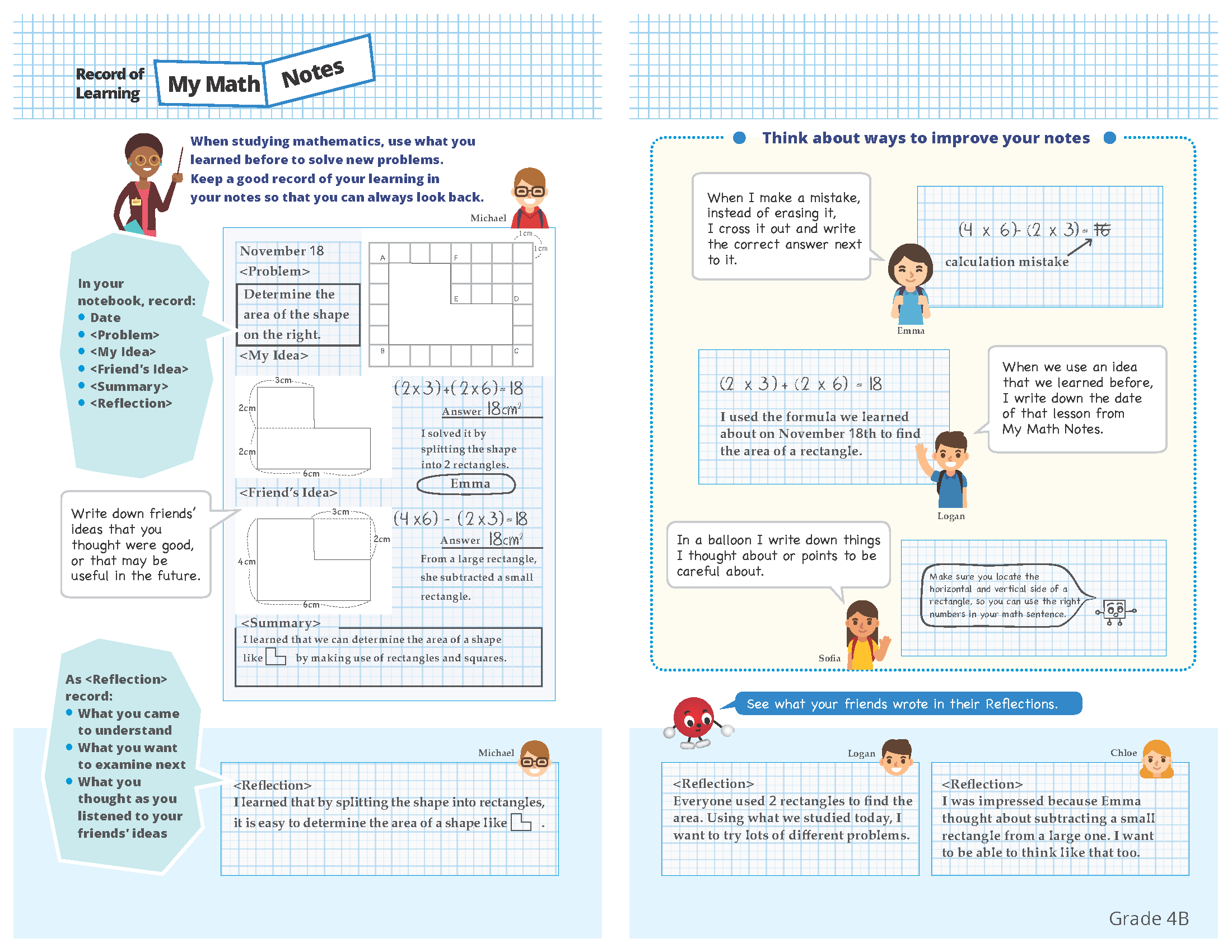This course for K-6 educators explores the power of student reflective journals in building students’ mathematical knowledge and practices.

1.1 – How Journals Help Students
Reflective journals provide a place for students to work out and revise their thinking about a problem, record classmates’ ideas that provided new insights, summarize the lesson and reflect, at the end of each lesson, on how their thinking changed and what they learned.
Journals allow students to:
- Revisit what they learned in prior lessons
- See the growth in their own mathematical knowledge and practices
- Appreciate the value of classmates’ ideas
- Develop the habit of reflecting on how and why their thinking changed–so they become metacognitive.
1.2 - Elements of a Journal Entry
A Japanese textbook example shows key elements of a journal entry, which are built gradually, beginning in kindergarten. The key elements in a journal entry are:
- Date
- Problem: a verbatim copy of the problem to be solved during the lesson
- My Idea: any number sentences, models, representations, or other information that the student generates during independent think-time
- My Friend’s Idea: a copy of the strategy shared by one of the students during the whole-class discussion
- Summary: a summary of the major learning in the lesson; typically, this is generated collaboratively by the class
- Reflection: 1-2 sentences summarizing what students learned; how their ideas changed; how their ideas connect with other content; their wonderings; any questions that they have; how they are feeling; etc.
Click on the image below to magnify. Download a PDF here.

Adapted from Mathematics 4B for Elementary School, H. Hironaka & Y. Sugiyama (eds.), 2006, Tokyo: Tokyo Shoseki Ltd. Copyright 2006 by Tokyo Shoseki Ltd. Adapted with permission.
See the Textbook Journal Examples for grades 2-6 in the resource tile at the end of this section for more examples.
1.3 - How Journals Help Teachers
Journals help teachers understand and respond to student thinking and identify gaps in their instruction. Teachers typically begin each TTP lesson by reading aloud several students’ journal reflections from the prior lesson. These reflections are strategically selected to highlight knowledge from the prior day’s lesson and mathematical practices the teacher is trying to build—such as writing mathematical expressions, reflecting on mistakes, or wondering.
In the first video below a teacher shares how and why she uses students’ journal reflections from the prior lesson to start each lesson. The second video provides an example of how this looks with students in the classroom.
